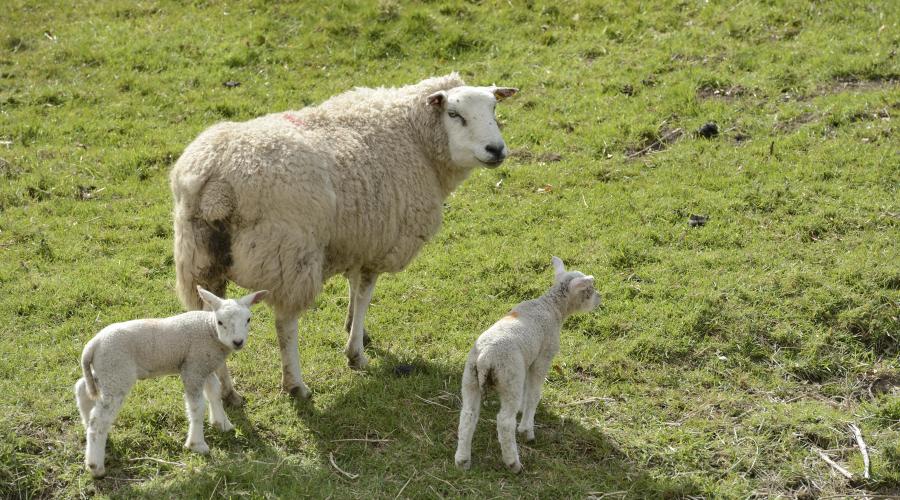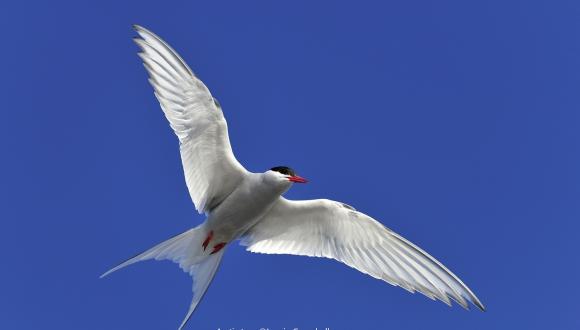
Foxes most likely responsible for lamb predation
13 February 2024
New research investigating reports of badger predation on lambs on Scottish farms has found that foxes were responsible.
In response to growing concerns in the Scottish farming sector about the suspected role of badgers in killing and eating lambs, a study was carried out by Science & Advice for Scottish Agriculture (SASA) in partnership with NatureScot, National Farmers Union Scotland (NFUS) and Scottish Land & Estates (SLE).
As predation is rarely witnessed, 27 farms across Scotland volunteered to take part in research to gather more evidence. The farmers came forward after a call for help to members of NFUS and SLE. At all the premises, farmers suspected they had previously lost lambs to badger predation.
In spring 2022 and 2023, post-mortems were carried out on 29 carcasses from the participating farms to determine whether lambs had been killed and eaten (predated) or were fed on after death (scavenged). Predation was confirmed in 48% of lambs, 31% were scavenged after death and predation could not be ruled out for the remaining 21%.
DNA evidence from these 29 carcasses, plus 10 additional dead or injured lambs that were swabbed by farmers, was used to identify the species involved.
Fox DNA was present on 34 of the 39 lambs sampled (87%), including all the lambs that showed evidence of predation.
Meanwhile badger DNA was only detected on the partial remains of two lambs (5%), but not on any of the carcasses submitted for post-mortem, or where predation was confirmed. Dog DNA was also present on 12 (31%) lambs; however, the study suggested this was likely because of direct or indirect contact with farm dogs.
The results therefore suggest that foxes remain the most likely culprit for lamb predation where it occurs on Scottish farms and farmers facing lamb losses should examine their fox control measures.
Sheila George, Wildlife Biologist at SASA, said: “Livestock predation can be particularly distressing for farmers but identifying the predator from field signs can be challenging. Combining post-mortem and DNA evidence, we found that puncture wounds around the head, neck and throat, and associated bleeding, were a good indicator that fox predation had occurred.
“Despite the abundance of badgers on the study farms, we did not find DNA evidence that they killed lambs or regularly scavenged carcasses. The findings should help inform livestock managers and their predator control plans.”
Donald Fraser, NatureScot’s Head of Wildlife Management, said: “These findings begin to fill an important gap in our knowledge on lamb predation on Scottish farms and demonstrate the value of high-quality science and evidence in improving our understanding of interactions between wildlife and livestock.
“This research is a good example of partnership working to respond to concerns raised by the farming community. We will be working closely with NFUS and SLE to provide further advice and guidance to farmers affected by predation to help them prevent losses.”
Peter Douglas from NFU Scotland said: “Losing lambs to predators and having adequate control measures in place to deal with predation is important to Scottish sheep farmers and crofters to minimise losses.
“We thank NatureScot and SASA for undertaking this small-scale study and for the farmers and crofters who helped out. The rising number of badgers means we need to continue to explore their impact on farming and wildlife.
“The impact of fox predation is well known and, as we head into lambing, this study highlights the importance of identifying the cause of losses and what control options for foxes are available. We will be briefing our members on this shortly.”
Nadia Flaherty, Policy Advisor (Wildlife Management) for Scottish Land & Estates, said: “We are enormously grateful to the farms which volunteered to take part in this important research, the findings of which clearly demonstrate the impacts of foxes, in particular, on vulnerable lambs.
“This research will usefully inform actions to mitigate against the impacts of predators in the future, and we hope further such studies will be considered to ascertain the kind of impacts badgers might be having on wildlife, including vulnerable ground-nesting birds.”




